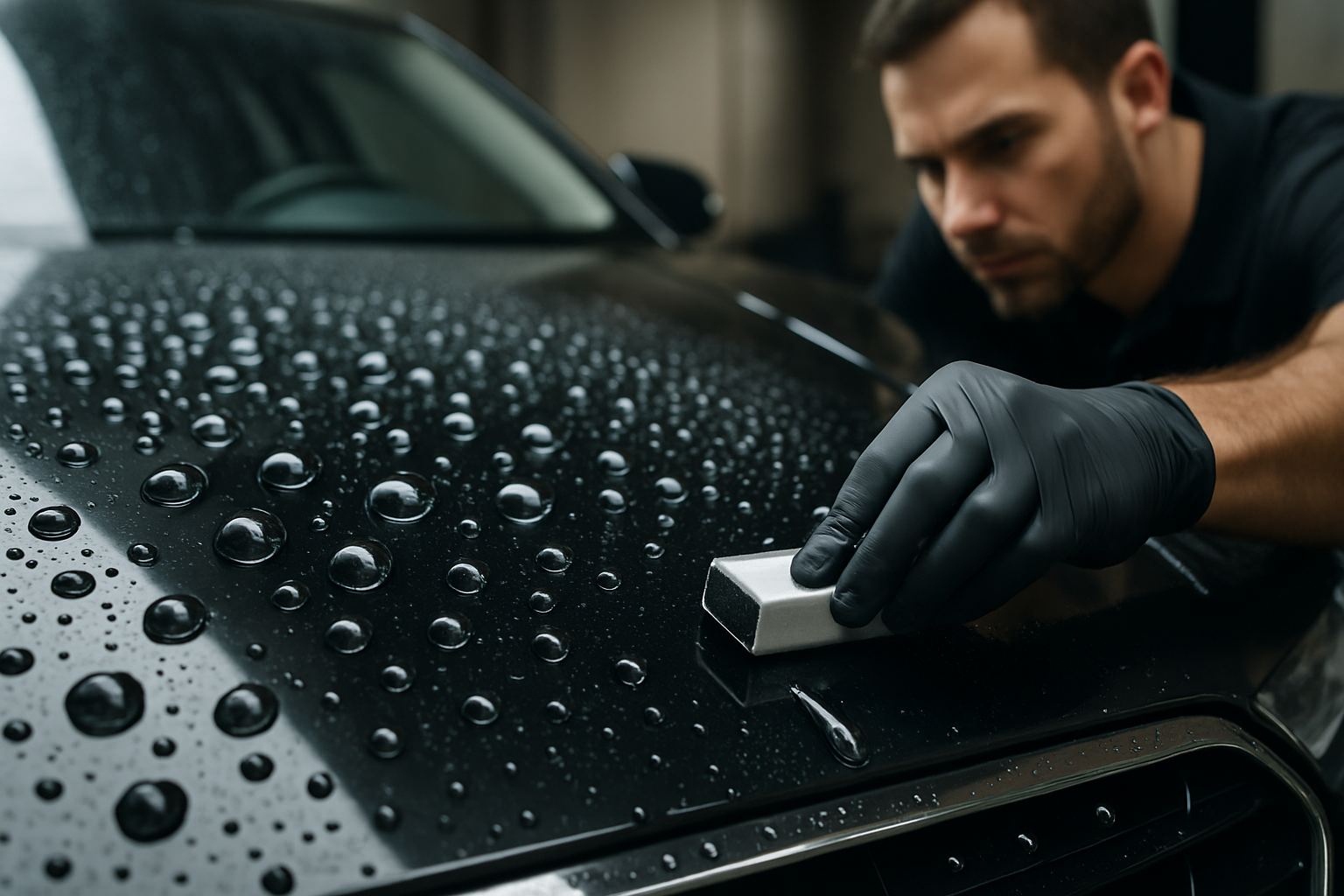Hydrophobic Coatings: The Future of Car Care
The world of automotive maintenance is undergoing a silent revolution. As vehicles become more technologically advanced, so do the methods we use to protect and preserve them. Enter hydrophobic coatings, a cutting-edge solution that's transforming how we approach car care. This innovative technology promises to keep vehicles cleaner, shinier, and better protected against the elements, all while reducing the time and effort spent on maintenance.

The Science Behind Hydrophobic Coatings
At its core, hydrophobic coating technology is based on the principle of water repellency. The term hydrophobic literally means fear of water, and these coatings create a surface that water and other liquids cannot easily adhere to. This effect is achieved through the use of nanoscale particles that create a microscopic texture on the surface of the vehicle. When water droplets come into contact with this texture, they form nearly perfect spheres and roll off, taking dirt and debris with them.
The science behind these coatings draws inspiration from nature. The lotus leaf, for example, has a naturally hydrophobic surface that allows it to stay clean in muddy environments. Scientists and engineers have studied these natural phenomena and developed synthetic materials that mimic these properties, but with even greater effectiveness and durability.
Evolution of Automotive Protection
Traditionally, car owners have relied on waxes and sealants to protect their vehicles’ paint. While effective to some degree, these methods require frequent reapplication and offer limited protection against environmental factors. Hydrophobic coatings represent a significant leap forward in this realm.
Unlike traditional waxes, which sit on top of the paint, hydrophobic coatings bond at a molecular level with the vehicle’s surface. This creates a much more durable protective layer that can last for years rather than months. Moreover, the self-cleaning properties of these coatings mean that vehicles stay cleaner for longer periods, reducing the need for frequent washing.
Application and Durability
The application process for hydrophobic coatings is a precise science that requires careful preparation and execution. First, the vehicle must be thoroughly cleaned and decontaminated to ensure no particles interfere with the bonding process. Then, the coating is applied in thin, even layers, often requiring multiple coats for optimal performance.
Once applied, these coatings can last anywhere from two to five years, depending on the specific product and environmental conditions. This longevity is a game-changer for car owners, offering extended protection without the need for frequent reapplication. However, it’s worth noting that while highly durable, these coatings are not indestructible. Proper maintenance and care are still necessary to maximize their lifespan and effectiveness.
Benefits Beyond Water Repellency
While the water-beading effect of hydrophobic coatings is visually striking, their benefits extend far beyond mere aesthetics. These coatings provide a robust barrier against a wide range of environmental contaminants, including UV rays, acid rain, bird droppings, and tree sap. This comprehensive protection helps preserve the vehicle’s paint, reducing fading and oxidation over time.
Furthermore, the smooth surface created by the coating makes it more difficult for dirt and grime to adhere to the vehicle. This not only keeps the car cleaner for longer but also makes subsequent cleaning easier and less time-consuming. For many car owners, this translates to significant savings in both time and money spent on car care products and services.
Impact on Professional Detailing
The rise of hydrophobic coatings has had a profound impact on the professional detailing industry. Detailers have had to adapt their skills and services to incorporate these new technologies. Many now offer ceramic coating applications as a premium service, recognizing the value and demand for long-lasting protection.
This shift has also led to changes in the tools and techniques used in car care. Traditional buffing and polishing methods have been refined to work in harmony with these coatings, ensuring that the protective layer remains intact during routine maintenance. As a result, the detailing industry has seen a surge in innovation, with new products and methods being developed specifically for coated vehicles.
Environmental Considerations
An often overlooked aspect of hydrophobic coatings is their potential environmental impact. By reducing the frequency of car washes and the amount of cleaning products used, these coatings can lead to significant water conservation and a reduction in chemical runoff. Additionally, the extended lifespan of vehicle paint could potentially reduce the need for repainting, further decreasing the environmental footprint of vehicle ownership.
However, it’s important to note that the production and application of these coatings do involve chemicals, and proper disposal of these materials is crucial. As the technology continues to evolve, we’re likely to see more eco-friendly formulations emerge, further aligning this innovation with growing environmental concerns.
The Future of Hydrophobic Technology
As impressive as current hydrophobic coatings are, the technology continues to evolve at a rapid pace. Researchers are exploring ways to enhance the durability and performance of these coatings, with some aiming to create permanent solutions that last the lifetime of the vehicle. Others are investigating self-healing properties that would allow the coating to repair minor scratches and imperfections automatically.
The potential applications extend beyond just the exterior of vehicles. We may soon see hydrophobic coatings used on windshields to improve visibility in rainy conditions, or on interior surfaces to repel stains and make cleaning easier. As this technology matures, it’s poised to become an integral part of automotive design and manufacturing, rather than just an aftermarket addition.
In conclusion, hydrophobic coatings represent a significant leap forward in automotive protection and maintenance. By offering superior durability, ease of cleaning, and comprehensive protection against environmental factors, these coatings are changing the way we think about car care. As the technology continues to advance, we can expect to see even more innovative applications that will further revolutionize the automotive industry. For car enthusiasts and everyday drivers alike, the future of vehicle maintenance looks cleaner, shinier, and more effortless than ever before.





